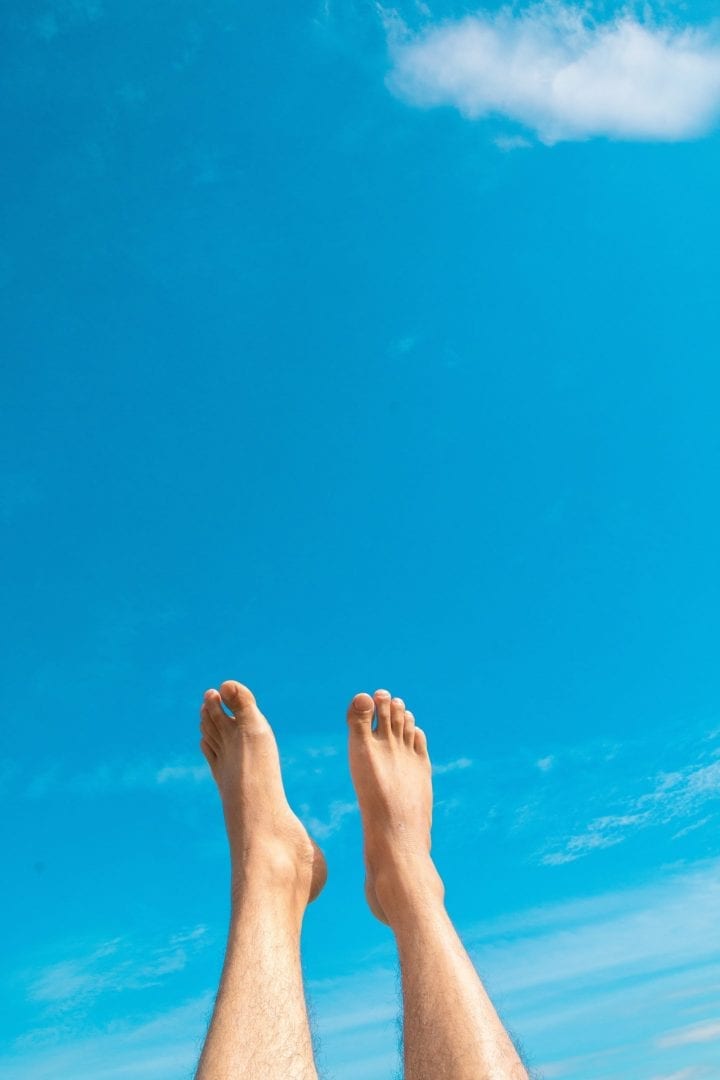Private Services
Podiatry Clinic
Podiatry is a field of medicine that aims to improve the overall health and wellbeing of patients by focusing on preventing, diagnosing and treating conditions associated with the foot and ankle.
Our feet are complex structures, consisting of about 26 bones, numerous joint, ligaments, muscles and tendons. In the average lifetime, we walk approximately one hundred thousand miles. Each step we put forward we are applying an impact more than our body weight. So, most of us will experience a foot problem at some time in our lifetime. Early diagnosis and treatment of foot problems are extremely important in preventing long term complications.
At Temple Clinic, we take pride in providing you with the most clinically advanced care to patients seeking conservative treatment for foot-related sport injuries, biomechanical problems, diabetic foot care, treatment of verrucas and painful ailments such as bunions and hammertoes.
To book an appointment call: 020 8991 2199

Biomechanical Assessments and Custom made orthotics
Our podiatrist uses the latest technologies to conduct biomechanical assessments and produce custom made orthotics specific to your needs. For more information please visit the link below:
Ingrown Toenails
An ingrown toenail occurs when the toenail grows into the nail bed and becomes embedded in the skin around the nail. This can be extremely painful and usually results in the area bleeding or weeping and sometimes becoming infected.
Soaking your foot in warm, salty or soapy water several times each day is usually a good way to treat an ingrown nail. If the pain is persistent or you see any discharge on either sides of the nail you will have to contact a podiatrist to determine the best course of treatment.
Bunions
Bunions are misaligned big toe joints that can become swollen and tender, causing the first joint of the big toe to slant outward, and the second joint to angle toward the other toes.
Footwear modification is a very important part of conservative management. When choosing a shoe, make sure the toe box is high and broad, and can accommodate the bunion. Gel bunion shields and gel toe caps are also recommended to eliminate friction between the shoe and the bunion, while providing comfort and lubrication. If the problem persists please contact your podiatrist.
Claw Toes
Claw toe is normally caused by a muscle imbalance in the foot.
Changing the type of footwear worn is a very important step in the treatment of claw toes. When choosing a shoe, make sure the toe box is high and broad, and can accommodate the claw toes. A shoe with a high, broad toe box will provide enough room in the forefoot area so that there is less friction against the toes. Other conservative treatments include using products designed to relieve the pain on the claw toes, such as toe crests and hammer toe splints. These devices will help hold down the claw toe and provide relief to the forefoot. Gel toe shields and gel toe caps are also recommended to eliminate friction between the shoe and the toe, while providing comfort and lubrication. If the problem persists, consult your podiatrist.
Athlete’s Foot
Athlete’s foot is a skin disease caused by a fungus, usually occurring between the toes. The fungus usually attacks the feet because shoes create a warm, dark, and humid environment that encourages fungus growth. The warmth and dampness of areas around swimming pools, showers, and locker rooms, are also breeding grounds for fungi.
Symptoms of athlete’s foot include drying skin, itching scaling, inflammation, and blisters. Athlete’s foot may spread to the soles of the feet and to the toe nails, and can spread to other parts of the body, including the groin and underarms.
You can prevent athlete’s foot by:
- Avoiding walking barefoot. Use shower shoes.
- Reducing perspiration by using talcum powder.
- Wearing light and airy shoes.
- Wearing socks that keep your feet dry, and changing them frequently if you perspire heavily.
Fungal Toenail
Fungal toenail infections can persist for years without ever causing pain or discomfort. As the fungus grows, the nail may become thicker, yellowish-brown or darker in color. If you leave it untreated, the infection may spread to the other toenails, the skin, or even your fingernails.
Depending on the type of infection you have, a topical or oral medication may need to be prescribed, and frequently the diseased nail matter and debris should be removed.
Flat Feet
Flat feet is a common condition. Stiff, inflexible or painful flat feet however may be associated with other conditions and require medical attention. If left untreated, this condition may lead to severe disability and chronic pain.
Non-steroidal anti-inflammatory medications, ice, exercises to stretch, strengthen and coordination, supportive taping and bracing, or orthotic devices are the common ways of treating painful progressive flatfoot. Consult with your podiatrist before taking any actions.
Hammertoes
Hammertoe is a deformity commonly of the second, third or fourth toes. In this condition, the toe is contracted at the middle joint, resembling a hammer and leading to severe pressure and pain. Left untreated, hammertoes can become inflexible and require surgery. People with hammertoe may have corns or calluses on the top of the middle joint of the toe or on the tip of the toe.
Treatment for the condition typically involves shoes with soft, roomy toe boxes and toe exercises to stretch and strengthen the muscles. Commercially available straps, cushions or non-medicated corn pads may also relieve symptoms. If the problem persists please contact your podiatrist.
Diabetes and your feet
Foot problems are a big risk in diabetics. Diabetics must constantly monitor their feet or otherwise they could face severe consequences, including amputation. What you may not know is nearly 80% of life altering amputations could have been prevented.
Foot problems in persons with diabetes are usually the result of three primary factors: neuropathy, poor circulation, and decreased resistance to infection. Most of these problems are preventable through proper care and regular visits to your podiatrist. Proactive screening, regular assessment and education are effective measures to detect and help prevent early foot problems, thus reducing amputation rates.
In Temple Clinic the role of our podiatrist is essential to this approach and we offer:
Screening
- As an essential part of the prevention program for patients with diabetes, we provide foot screening examination on every newly diagnosed patient (foot examination, evaluation of the skin and blood supply and diagnostic testing, including Doppler or ABI studies to evaluate blood flow). We also do a simple test to check the level of feeling in the foot.
Diabetic foot management
- We provide appropriate management schemes including routine foot care, footwear recommendations, pressure relief, foot ulcer debridement and referral to specialist care.
Education
- We provide intensive one to one education to enable patients to acquire the necessary knowledge and skill to take responsibility for managing their foot health.
Orthoses/Insoles
- We provide appropriate accommodative orthoses/insoles for patients who are at risk of increased foot plantar pressures. These orthoses/insoles lower foot plantar pressure and increase stability and efficiency of foot function.
Verrucae/Plantar Warts
Plantar warts are caused by a virus, which generally invades the skin through small or invisible cuts and abrasions. Children, especially teenagers, tend to be more susceptible to warts than adults.
Plantar warts tend to be hard and flat, with a rough surface and well-defined boundaries; warts are generally raised and fleshier when they appear on the top of the foot or on the toes. Plantar warts are often gray or brown (but the color may vary), with a center that appears as one or more pinpoints of black.
If left untreated, warts can grow to an inch or more in circumference and can spread into clusters of warts. Like any other infectious lesions, they spread by touching, scratching, or even with contact of skin shed from another wart.
At our podiatry clinic we offer a wide range of treatments to suit every need, including application of caustic medication, cryosurgery and homeopathic treatments.
- You can prevent catching verrucae by:
- Avoiding direct contact with verrucae – from other persons or from other parts of the body.
- Avoid walking barefoot such as public swimming pools and common shower rooms.
- Change your shoes and socks daily
- Check your children’s feet periodically
- Keep your feet clean and dry
Black Toenails
Athletes and other sportspersons will often encounter a problem with their toenails turning black. Black toenails occur because of a direct impact to the nail, for instance if the toe constantly rubs against the shoe during walking or running. The blackness is essentially blood and bruising under the toenail. Sometimes, the bruise can lead to a fungal nail infection. If you are a diabetic, any change in the color of your toenail should be evaluated immediately. You may also feel soreness under the toenail, and this could be due to an increased pressure caused by bleeding under the toenail.
Treatment may include trimming the loose nail back and often it is necessary to release some of the blood by boring through the nail with a sterilized needle. If the skin under the nail is ulcerated, a topical antibiotic ointment should be applied. Patients with diabetes should not treat this condition themselves and should contact a podiatrist immediately.
Corns and Calluses
A callus is an area of hard, thickened skin and they usually occur in areas where there is repeated friction and pressure. Calluses usually have painful nerves and fluid-filled sacs beneath them, causing symptoms ranging from sharp, shooting pain to dull and aching soreness. They can be disabling, and in a diabetic can lead to serious complications if left untreated.
A corn is a localized thickening of the skin due to pressure. Corns can be very painful, especially if there is inflammation and swelling around the corn. Improperly fitting shoes are a leading cause of corns.
Treatment is usually stopping the pressure and getting rid of what is causing the pressure. You should however be careful with over-the counter callus remover that have strong acids as they can cause chemical burns when not used correctly. If you need assistance relieving calluses or corns, visit our podiatrist to get them trimmed and for comfortable padding or insoles to relieve pressure over these painful areas.
Our phone lines are open 9am – 6pm Monday to Saturday. We look forward to seeing you at Temple Clinic.



